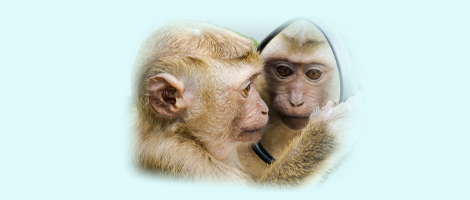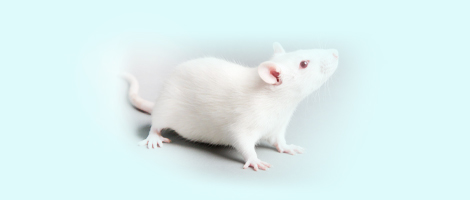













• •
陈子宜1,2,3, 孙红燕1,2,3, 康品方1,2,3, 武文娟1,2,3( )
)
作者简介:陈子宜(2000—),女,硕士研究生,研究方向:肺动脉高压。E-mail:3211227658@qq.com。基金资助:
CHEN Ziyi1,2,3, SUN Hongyan1,2,3, KANG Pinfang1,2,3, WU Wenjuan1,2,3( )
)
Contact:
WU Wenjuan(ORCID:0009-0000-5196-7949), E-mail:0600032@bbmu.edu.cn摘要:
肺动脉高压(pulmonary hypertension,PH)是一种以肺动脉压力持续升高为特征,致使右心室负荷加重,最终可能引发右心衰竭的疾病。其发病机制涉及多个维度,包括血管内皮功能障碍、血管平滑肌增殖、炎症反应、血栓形成及遗传因素等多个方面。动物模型作为研究PH发病机制和开发治疗策略的核心工具,每种模型都有其独特优势与局限。单剂量注射野百合碱诱导模型,操作简便、成本较低,可以在短时间内诱导出肺动脉高压,但其病理生理机制与人类特发性肺动脉高压存在一定差异。而Sugen5416联合慢性低氧诱导的肺动脉高压模型,能较好地模拟肺动脉高压的发生发展过程,通过将动物置于低氧环境中,引发肺血管收缩及重塑,但造模周期较长,且低氧程度对结果影响较大。除了以上两种常用的构建模型方法,还有多种新兴技术如基因编辑工程,可以精准探究特定基因在肺动脉高压中的功能;诱导多能干细胞结合3D类器官技术,是依托个体化建模保留患者遗传信息打造精准临床转化。每种模型都能从不同层面模拟人类PH的病理过程,为新型治疗靶点的研发提供了重要平台。本文对多种用于构建肺动脉高压的动物模型做了综合性的描述,深入分析了各模型的特点、应用场景及局限性,期望为理解肺动脉高压疾病本质提供关键线索,为研制新治疗策略和药物提供宝贵实验技术支持。
中图分类号:
陈子宜,孙红燕,康品方,等.肺动脉高压动物实验模型的研究进展[J]. 实验动物与比较医学.. DOI: 10.12300/j.issn.1674-5817.2025-047.
CHEN Ziyi,SUN Hongyan,KANG Pinfang,et al. Research Advances in Animal Experimental Models of Pulmonary Hypertension[J]. Laboratory Animal and Comparative Medicine. DOI: 10.12300/j.issn.1674-5817.2025-047.
| [1] | MOCUMBI A, HUMBERT M, SAXENA A, et al. Pulmonary hypertension [J]. Nat Rev Dis Primers, 2024, 10(1): 1. |
| [2] | BOUCHERAT O, AGRAWAL V, LAWRIE A, et al. The Latest in Animal Models of Pulmonary Hypertension and Right Ventricular Failure [J]. Circulation research, 2022, 130(9): 1466-1486. |
| [3] | QIU F, MIAO H R, HUI H L, et al. MHCII(hi)LYVE1(lo)CCR2(hi) Interstitial Macrophages Promote Medial Fibrosis in Pulmonary Arterioles and Contribute to Pulmonary Hypertension [J]. Circ Res, 2025. |
| [4] | ZHAO Y, DING C, SU H, et al. Single Test-Based Diagnosis and Subtyping of Pulmonary Hypertension Caused by Fibrosing Mediastinitis Using Plasma Metabolic Analysis [J]. Adv Sci (Weinh), 2025, 12(17): e2416454. |
| [5] | RIVERA-LEBRON B N, CRUZ MOREL K J, RISBANO M G. Postural changes from ventilatory gas exchange in pulmonary hypertension: Is it a practical solution to a complex question? [J]. Respirology (Carlton, Vic), 2020, 25(4): 354-355. |
| [6] | CHANG M C J, GRIEDER F B. The continued importance of animals in biomedical research [J]. Lab Anim (NY), 2024, 53(11): 295-297. |
| [7] | CARMAN B L, PREDESCU D N, MACHADO R, et al. Plexiform Arteriopathy in Rodent Models of Pulmonary Arterial Hypertension [J]. Am J Pathol, 2019, 189(6): 1133-1144. |
| [8] | LUO A, HAO R, ZHOU X, et al. Transcriptomic profiling highlights cell proliferation in the progression of experimental pulmonary hypertension in rats [J]. Sci Rep, 2024, 14(1): 14056. |
| [9] | SUN X Q, KLOUDA T, BARNASCONI S, et al. Pneumonectomy combined with SU5416 or monocrotaline pyrrole does not cause severe pulmonary hypertension in mice [J]. Am J Physiol Lung Cell Mol Physiol, 2024, 327(2): L250-l257. |
| [10] | UKITA R, STOKES J W, WU W K, et al. A Large Animal Model for Pulmonary Hypertension and Right Ventricular Failure: Left Pulmonary Artery Ligation and Progressive Main Pulmonary Artery Banding in Sheep [J]. J Vis Exp, 2021, (173). |
| [11] | WU X H, MA J L, DING D, et al. Experimental animal models of pulmonary hypertension: Development and challenges [J]. Animal Model Exp Med, 2022, 5(3): 207-216. |
| [12] | ZIMMER A, TEIXEIRA R B, CONSTANTIN R L, et al. The progression of pulmonary arterial hypertension induced by monocrotaline is characterized by lung nitrosative and oxidative stress, and impaired pulmonary artery reactivity [J]. European journal of pharmacology, 2021, 891: 173699. |
| [13] | SUN J, LIN J, YIN D, et al. Androgen receptor inhibitor ameliorates pulmonary arterial hypertension by enhancing the apoptosis level through suppressing the Notch3/Hes5 pathway [J]. Front Pharmacol, 2025, 16: 1572489. |
| [14] | MORALES-CANO D, IZQUIERDO-GARCíA J L, BARREIRA B, et al. Impact of a TAK-1 inhibitor as a single or as an add-on therapy to riociguat on the metabolic reprograming and pulmonary hypertension in the SUGEN5416/hypoxia rat model [J]. Frontiers in pharmacology, 2023, 14: 1021535. |
| [15] | CAI Z, LI J, ZHUANG Q, et al. MiR-125a-5p ameliorates monocrotaline-induced pulmonary arterial hypertension by targeting the TGF-β1 and IL-6/STAT3 signaling pathways [J]. Experimental & molecular medicine, 2018, 50(4): 1-11. |
| [16] | 俞佳慧, 巩倩, 庄乐南. 肺动脉高压动物模型及其在药物研究中的应用进展 [J]. 实验动物与比较医学, 2023, 43(04): 381-397. |
| Yu Jiahui, Gong Qian, Zhuang Lenan. Advances in animal models of pulmonary hypertension and their application in drug research [J]. Laboratory Animal and Comparative Medicine, 2023, 43(04): 381-397. | |
| [17] | JIANG H, DING D, HE Y, et al. Xbp1s-Ddit3 promotes MCT-induced pulmonary hypertension [J]. Clinical science (London, England : 1979), 2021, 135(21): 2467-2481. |
| [18] | 谢锦程, 肖梦媛, 邓少东, et al. 肺动脉高压实验模型的研究进展 [J]. 中国比较医学杂志, 2023, 33(09): 79-89. |
| Xie Jincheng, Xiao Mengyuan, Deng Shaodong, et al. Research progress on experimental models of pulmonary hypertension [J]. Chinese Journal of Comparative Medicine, 2023, 33(09): 79-89. | |
| [19] | THOMPSON A A R, LAWRIE A. Targeting Vascular Remodeling to Treat Pulmonary Arterial Hypertension [J]. Trends in molecular medicine, 2017, 23(1): 31-45. |
| [20] | LONGEVITY O. Retracted: S-Nitroso-L-Cysteine Ameliorated Pulmonary Hypertension in the MCT-Induced Rats through Anti-ROS and Anti-Inflammatory Pathways [J]. Oxid Med Cell Longev, 2023, 2023: 9781259. |
| [21] | CHEN X, YU X, LIAN G, et al. Canagliflozin inhibits PASMCs proliferation via regulating SGLT1/AMPK signaling and attenuates artery remodeling in MCT-induced pulmonary arterial hypertension [J]. Biomed Pharmacother, 2024, 174: 116505. |
| [22] | FLORES C V, CHAN S Y. Therapeutic targets for pulmonary arterial hypertension: insights into the emerging landscape [J]. Expert Opin Ther Targets, 2025. |
| [23] | GAO G, CHEN A, YAN Y, et al. Role of insulin signaling dysregulation in pulmonary vascular remodeling in rats with monocrotaline-induced pulmonary arterial hypertension [J]. Front Cardiovasc Med, 2025, 12: 1543319. |
| [24] | HONG J, ARNESON D, UMAR S, et al. Single-Cell Study of Two Rat Models of Pulmonary Arterial Hypertension Reveals Connections to Human Pathobiology and Drug Repositioning [J]. American journal of respiratory and critical care medicine, 2021, 203(8): 1006-1022. |
| [25] | CAHYONO A, IRWANTO, RAHMAN M A, et al. Progression of pulmonary arterial hypertension: A study in model [J]. Open Vet J, 2024, 14(12): 3498-3504. |
| [26] | WANG F, XIAO W, LI J, et al. p16(INK4a) promoted progress of MCT induced pulmonary hypertension via maintaining redox balance and autophagy pathway [J]. Biochem Biophys Res Commun, 2025, 749: 151385. |
| [27] | TATSUOKA Y, HE Z, LIN H M, et al. The role of right ventricular systolic pressure and ARISCAT score in perioperative pulmonary risk assessment [J]. Braz J Anesthesiol, 2025: 844597. |
| [28] | YI S, QU T, WU H, et al. Knockdown of PLOD2 inhibits pulmonary artery smooth muscle cell glycolysis under chronic intermittent hypoxia via PI3K/AKT signal [J]. Exp Cell Res, 2025, 446(1): 114453. |
| [29] | TASCA S, TüRCK P, DROSDOWSKI D, et al. Melatonin improves adverse vascular remodelling and redox homeostasis in monocrotaline-induced pulmonary arterial hypertension [J]. Arch Physiol Biochem, 2025: 1-12. |
| [30] | FU G, QIU L, WANG J, et al. Genome-wide characterization of circular RNAs in three rat models of pulmonary hypertension reveals distinct pathological patterns [J]. BMC Genomics, 2025, 26(1): 127. |
| [31] | ZHENG R, XU T, LIN Y, et al. Are endothelial cell proliferation and mesenchymal transition as distinguishing characteristics of 3-week Sugen5416/hypoxia mice model? [J]. Cardiovasc Res, 2023, 119(8): e140-e141. |
| [32] | ISHIBASHI T, INAGAKI T, OKAZAWA M, et al. IL-6/gp130 signaling in CD4(+) T cells drives the pathogenesis of pulmonary hypertension [J]. Proc Natl Acad Sci U S A, 2024, 121(16): e2315123121. |
| [33] | CHEN C N, HAJJI N, YEH F C, et al. Restoration of Foxp3(+) Regulatory T Cells by HDAC-Dependent Epigenetic Modulation Plays a Pivotal Role in Resolving Pulmonary Arterial Hypertension Pathology [J]. American journal of respiratory and critical care medicine, 2023, 208(8): 879-895. |
| [34] | 李新雨, 任周新, 赵鹏. 基于肺动脉高压的肺血管丛状病变的鼠类模型的研究进展 [J]. 中国比较医学杂志: 1-13. |
| Li Xinyu, Ren Zhouxin, Zhao Peng. Research progress on rodent models of plexogenic pulmonary arteriopathy based on pulmonary hypertension [J]. Chinese Journal of Comparative Medicine: 1-13. | |
| [35] | DAI J, CHEN H, FANG J, et al. Vascular Remodeling: The Multicellular Mechanisms of Pulmonary Hypertension [J]. Int J Mol Sci, 2025, 26(9). |
| [36] | BENZA R L, GRüNIG E, SANDNER P, et al. The nitric oxide-soluble guanylate cyclase-cGMP pathway in pulmonary hypertension: from PDE5 to soluble guanylate cyclase [J]. Eur Respir Rev, 2024, 33(171). |
| [37] | SUMI M P, TUPTA B, SONG K, et al. Expression of soluble guanylate cyclase (sGC) and its ability to form a functional heterodimer are crucial for reviving the NO-sGC signaling in PAH [J]. Free Radic Biol Med, 2024, 225: 846-855. |
| [38] | BIKOU O, SASSI Y. The Sugen/Hypoxia Rat Model for Pulmonary Hypertension and Right Heart Failure [J]. Methods in molecular biology (Clifton, NJ), 2024, 2803: 163-172. |
| [39] | HALL I F, KISHTA F, XU Y, et al. Endothelial to mesenchymal transition: at the axis of cardiovascular health and disease [J]. Cardiovasc Res, 2024, 120(3): 223-236. |
| [40] | MA X, LIU Y, LEI L, et al. Smooth Muscle Cell-Specific LKB1 Protects Against Sugen5416/Hypoxia-Induced Pulmonary Hypertension through Inhibition of BMP4 [J]. American journal of respiratory cell and molecular biology, 2024. |
| [41] | VISWANATHAN G, KIRSHNER H F, NAZO N, et al. Single-Cell Analysis Reveals Distinct Immune and Smooth Muscle Cell Populations that Contribute to Chronic Thromboembolic Pulmonary Hypertension [J]. American journal of respiratory and critical care medicine, 2023, 207(10): 1358-1375. |
| [42] | KARPOV A A, VAULINA D D, SMIRNOV S S, et al. Rodent models of pulmonary embolism and chronic thromboembolic pulmonary hypertension [J]. Heliyon, 2022, 8(3): e09014. |
| [43] | LIU W, ZHANG Y, LU L, et al. Expression and Correlation of Hypoxia-Inducible Factor-1α (HIF-1α) with Pulmonary Artery Remodeling and Right Ventricular Hypertrophy in Experimental Pulmonary Embolism [J]. Med Sci Monit, 2017, 23: 2083-2088. |
| [44] | NETO-NEVES E M, BROWN M B, ZARETSKAIA M V, et al. Chronic Embolic Pulmonary Hypertension Caused by Pulmonary Embolism and Vascular Endothelial Growth Factor Inhibition [J]. Am J Pathol, 2017, 187(4): 700-712. |
| [45] | SINGH S, HOUNG A, REED G L. Releasing the Brakes on the Fibrinolytic System in Pulmonary Emboli: Unique Effects of Plasminogen Activation and α2-Antiplasmin Inactivation [J]. Circulation, 2017, 135(11): 1011-1020. |
| [46] | CHEN L, CHEN X, HUANG Y, et al. Establishment of mouse models for severe pulmonary hypertension through 'double-hit' strategies [J]. Exp Physiol, 2024, 109(12): 2026-2030. |
| [47] | TEERAPUNCHAROEN K, BAG R. Chronic Thromboembolic Pulmonary Hypertension [J]. Lung, 2022, 200(3): 283-299. |
| [48] | 杨振文, 王宙明, 李晟, et al. 慢性血栓栓塞性肺动脉高压的治疗进展 [J]. 中国心血管杂志, 2024, 29(03): 278-282. |
| Yang Zhenwen, Wang Zouming, Li Sheng, et al. Advances in the treatment of chronic thromboembolic pulmonary hypertension [J]. Chinese Journal of Cardiovascular Medicine, 2024, 29(03): 278-282. | |
| [49] | AHN C M, HIROMI M. Chronic Thromboembolic Pulmonary Hypertension: Endovascular Treatment [J]. Korean Circ J, 2019, 49(3): 214-222. |
| [50] | MAHMUD E, MADANI M M, KIM N H, et al. Chronic Thromboembolic Pulmonary Hypertension: Evolving Therapeutic Approaches for Operable and Inoperable Disease [J]. Journal of the American College of Cardiology, 2018, 71(21): 2468-2486. |
| [51] | GHOFRANI H A, KIM N H. Medical and interventional therapies for inoperable CTEPH: a necessary combination? [J]. Lancet Respir Med, 2022, 10(10): 926-927. |
| [52] | MANDRAS S A, MEHTA H S, VAIDYA A. Pulmonary Hypertension: A Brief Guide for Clinicians [J]. Mayo Clin Proc, 2020, 95(9): 1978-1988. |
| [53] | PRICE L C, MARTINEZ G, BRAME A, et al. Perioperative management of patients with pulmonary hypertension undergoing non-cardiothoracic, non-obstetric surgery: a systematic review and expert consensus statement [J]. Br J Anaesth, 2021, 126(4): 774-790. |
| [54] | GRADY R M, CANTER M W, WAN F, et al. Pulmonary-to-Systemic Arterial Shunt to Treat Children With Severe Pulmonary Hypertension [J]. Journal of the American College of Cardiology, 2021, 78(5): 468-477. |
| [55] | MYERS J W, GHANAYEM N S, CAO Y, et al. Outcomes of systemic to pulmonary artery shunts in patients weighing less than 3 kg: analysis of shunt type, size, and surgical approach [J]. J Thorac Cardiovasc Surg, 2014, 147(2): 672-677. |
| [56] | MENG L, YUAN W, CHI H, et al. Genetic deletion of CMG2 exacerbates systemic-to-pulmonary shunt-induced pulmonary arterial hypertension [J]. Faseb j, 2021, 35(4): e21421. |
| [57] | SENGSIM J, VIJARNSORN C, CHANTHONG P, et al. Survival comparison in adults with congenital systemic to pulmonary shunt and borderline elevated pulmonary vascular resistance versus Eisenmenger syndrome [J]. Scientific Reports, 2024, 14(1): 29891. |
| [58] | SAVALE L, BENAZZO A, CORRIS P, et al. Transplantation, bridging, and support technologies in pulmonary hypertension [J]. Eur Respir J, 2024, 64(4). |
| [59] | XIONG M, YAO J P, WU Z K, et al. Fibrosis of pulmonary vascular remodeling in carotid artery-jugular vein shunt pulmonary artery hypertension model of rats [J]. Eur J Cardiothorac Surg, 2012, 41(1): 162-166. |
| [60] | LATUS H, KARANATSIOS G, BASAN U, et al. Clinical and prognostic value of endothelin-1 and big endothelin-1 expression in children with pulmonary hypertension [J]. Heart, 2016, 102(13): 1052-1058. |
| [61] | LINDER A N, HSIA J, KRISHNAN S V, et al. Management of systemic to pulmonary shunts and elevated pulmonary vascular resistance [J]. ERJ Open Res, 2023, 9(6). |
| [62] | ZHANG J, GU X, CHENG T L, et al. ASH2L Deficiency in Smooth Muscle Drives Pulmonary Vascular Remodeling [J]. Circulation research, 2025. |
| [63] | LI M, CHEN D, FAN J, et al. The efficacy, safety and clinical feasibility of a percutaneous atrial septal shunt device for pulmonary arterial hypertension: a single-center cohort study [J]. Respiratory research, 2025, 26(1): 67. |
| [64] | MITCHELL S, GOMEZ R, MATHAVAN A, et al. Development of New Intrapulmonary Shunts in Pulmonary Arterial Hypertension Treated with Sotatercept [J]. Am J Respir Crit Care Med, 2025. |
| [65] | UDDIN F, RUDIN C M, SEN T. CRISPR Gene Therapy: Applications, Limitations, and Implications for the Future [J]. Front Oncol, 2020, 10: 1387. |
| [66] | SEKAR D, LAKSHMANAN G, M B. Implications of CRISPR/Cas9 system in Hypertension and its related diseases [J]. J Hum Hypertens, 2021, 35(7): 642-644. |
| [67] | BISSERIER M, MATHIYALAGAN P, ZHANG S, et al. Regulation of the Methylation and Expression Levels of the BMPR2 Gene by SIN3a as a Novel Therapeutic Mechanism in Pulmonary Arterial Hypertension [J]. Circulation, 2021, 144(1): 52-73. |
| [68] | WANG L, MOONEN J R, CAO A, et al. Dysregulated Smooth Muscle Cell BMPR2-ARRB2 Axis Causes Pulmonary Hypertension [J]. Circulation research, 2023, 132(5): 545-564. |
| [69] | 刘赛利, 艾可龙, 胡长平. 一氧化氮与肺动脉高压及基于一氧化氮信号通路的肺动脉高压治疗药物研究进展 [J]. 中国药理学与毒理学杂志, 2023, 37(10): 792-797. |
| Liu Sali, Ai Kelong, Hu Changping. Nitric oxide and pulmonary hypertension: Advances in research on therapeutic drugs targeting the nitric oxide signaling pathway [J]. Chinese Pharmacological and Toxicological Bulletin, 2023, 37(10): 792-797. | |
| [70] | DOGGRELL S A. Is sotatercept, which traps activins and growth differentiation factors, a new dawn in treating pulmonary arterial hypertension (PAH)? [J]. Expert Opin Biol Ther, 2023, 23(7): 589-593. |
| [71] | EDDAHIBI S, MORRELL N, D'ORTHO M P, et al. Pathobiology of pulmonary arterial hypertension [J]. The European respiratory journal, 2002, 20(6): 1559-1572. |
| [72] | DEVENDRAN A, KAR S, BAILEY R, et al. The Role of Bone Morphogenetic Protein Receptor Type 2 (BMPR2) and the Prospects of Utilizing Induced Pluripotent Stem Cells (iPSCs) in Pulmonary Arterial Hypertension Disease Modeling [J]. Cells, 2022, 11(23). |
| [73] | WANG T, DUAN Y, LIU D, et al. The effect of transglutaminase-2 inhibitor on pulmonary vascular remodeling in rats with pulmonary arterial hypertension [J]. Clin Exp Hypertens, 2022, 44(2): 167-174. |
| [74] | 韩新源, 王顺达, 雍志军, et al. 5-羟色胺通过5-羟色胺2A受体对肺动脉成纤维细胞的激活作用 [J]. 山西医科大学学报, 2021, 52(12): 1558-1562. |
| Han Xinyuan, Wang Shunda, Yong Zhijun, et al. Activation of pulmonary artery fibroblasts by serotonin via the serotonin 2A receptor [J]. Journal of Shanxi Medical University, 2021, 52(12): 1558-1562. | |
| [75] | FUJIWARA M, YAGI H, MATSUOKA R, et al. [Analysis of genetic mutation and modifier genes in pulmonary arterial hypertension] [J]. Nihon Rinsho, 2008, 66(11): 2071-2075. |
| [76] | JIAO Y R, WANG W, LEI P C, et al. 5-HTT, BMPR2, EDN1, ENG, KCNA5 gene polymorphisms and susceptibility to pulmonary arterial hypertension: A meta-analysis [J]. Gene, 2019, 680: 34-42. |
| [77] | ZHOU K, ZHAO Z, LI S, et al. A new glioma grading model based on histopathology and Bone Morphogenetic Protein 2 mRNA expression [J]. Sci Rep, 2020, 10(1): 18420. |
| [78] | LIU C, YUAN B, CHEN H, et al. Effects of MiR-375-BMPR2 as a Key Factor Downstream of BMP15/GDF9 on the Smad1/5/8 and Smad2/3 Signaling Pathways [J]. Cell Physiol Biochem, 2018, 46(1): 213-225. |
| [79] | POPP S, SCHMITT-BöHRER A, LANGER S, et al. 5-HTT Deficiency in Male Mice Affects Healing and Behavior after Myocardial Infarction [J]. J Clin Med, 2021, 10(14). |
| [80] | CHEN Y, MA P, BO L, et al. Isorhamnetin alleviates symptoms and inhibits oxidative stress levels in rats with pulmonary arterial hypertension [J]. Iran J Basic Med Sci, 2024, 27(12): 1616-1623. |
| [81] | ZHANG J, JIA Z, PAN H, et al. From induced pluripotent stem cell (iPSC) to universal immune cells: literature review of advances in a new generation of tumor therapies [J]. Transl Cancer Res, 2025, 14(4): 2495-2507. |
| [1] | 刘亚益, 贾云凤, 左一鸣, 张军平, 吕仕超. 心气阴两虚证动物模型的构建方法与评价进展[J]. 实验动物与比较医学, 2025, 45(4): 411-421. |
| [2] | 赵鑫, 王晨曦, 石文清, 娄月芬. 斑马鱼在炎症性肠病机制及药物研究中的应用进展[J]. 实验动物与比较医学, 2025, 45(4): 422-431. |
| [3] | 谭邓旭, 马一凡, 刘可, 张延英, 师长宏. 重塑细胞间互动:类器官共培养模型赋能疾病机制与治疗探索[J]. 实验动物与比较医学, 2025, 45(3): 309-317. |
| [4] | 李会萍, 高洪彬, 温金银, 杨锦淳. 疾病动物模型数字化图谱数据库平台的构建与初步应用[J]. 实验动物与比较医学, 2025, 45(3): 300-308. |
| [5] | 潘颐聪, 蒋汶洪, 胡明, 覃晓. 慢性肾脏病大鼠主动脉钙化模型的术式优化及效果评价[J]. 实验动物与比较医学, 2025, 45(3): 279-289. |
| [6] | 陈钰涵, 陈瑾玲, 李欣, 区燕华, 王斯, 陈镜伊, 王兴易, 袁嘉丽, 段媛媛, 羊忠山, 牛海涛. 基于中西医临床病证特点的重症肌无力动物模型分析[J]. 实验动物与比较医学, 2025, 45(2): 176-186. |
| [7] | 连辉, 姜艳玲, 刘佳, 张玉立, 谢伟, 薛晓鸥, 李健. 异常子宫出血大鼠模型的构建与评价[J]. 实验动物与比较医学, 2025, 45(2): 130-146. |
| [8] | 罗世雄, 张赛, 陈慧. 常见哮喘动物模型的建立方法与评价研究进展[J]. 实验动物与比较医学, 2025, 45(2): 167-175. |
| [9] | 王碧莹, 鲁家铄, 昝桂影, 陈若松, 柴景蕊, 刘景根, 王瑜珺. 啮齿类动物药物成瘾模型的构建方法和应用进展[J]. 实验动物与比较医学, 2025, 45(2): 158-166. |
| [10] | 费彬, 郭文科, 郭建平. 疝疾病动物模型研究及新型疝修补材料应用进展[J]. 实验动物与比较医学, 2025, 45(1): 55-66. |
| [11] | 杨家豪, 丁纯蕾, 钱风华, 孙旗, 姜旭升, 陈雯, 沈梦雯. 脓毒症相关脏器损伤动物模型研究进展[J]. 实验动物与比较医学, 2024, 44(6): 636-644. |
| [12] | 孙效容, 苏丹, 贵文娟, 陈玥. 手术诱导大鼠中重度膝骨关节炎模型的建立与评价[J]. 实验动物与比较医学, 2024, 44(6): 597-604. |
| [13] | 田芳, 潘滨, 史佳怡, 徐燕意, 李卫华. 大气细颗粒物PM2.5暴露动物模型建立方法及在生殖毒性研究中的应用进展[J]. 实验动物与比较医学, 2024, 44(6): 626-635. |
| [14] | 赵小娜, 王鹏, 叶茂青, 曲新凯. 应用Triacsin C构建新型高血糖肥胖小鼠心功能减退模型[J]. 实验动物与比较医学, 2024, 44(6): 605-612. |
| [15] | 涂颖欣, 纪依澜, 王菲, 杨东明, 王冬冬, 孙芷馨, 戴悦欣, 王言吉, 阚广捍, 吴斌, 赵德明, 杨利峰. 小型猪后肢去负荷模拟失重模型的建立与组织损伤研究[J]. 实验动物与比较医学, 2024, 44(5): 475-486. |
| 阅读次数 | ||||||
|
全文 |
|
|||||
|
摘要 |
|
|||||